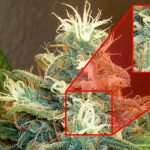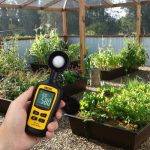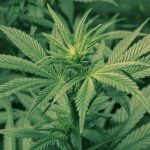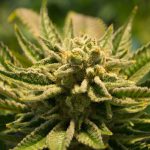Throughout the cannabis life cycle, growers will, at one time or another, notice some deficiencies in their plants that are an indication of poor development. Some cannabis leaf symptoms are easily noticeable, while some growers find it hard to identify others.
When this happens, some growers, especially new cannabis growers, panic because they do not know what to do or what the deficiencies mean. Therefore, it is important to learn the crops and know what to expect during their development phases.
Luckily, for many cannabis growers, the plant is resilient, and it has the ability to stand harsh conditions and invaders. The resilience of the cannabis plants provides you with time to figure out the deficiencies and work out rectifying situations.
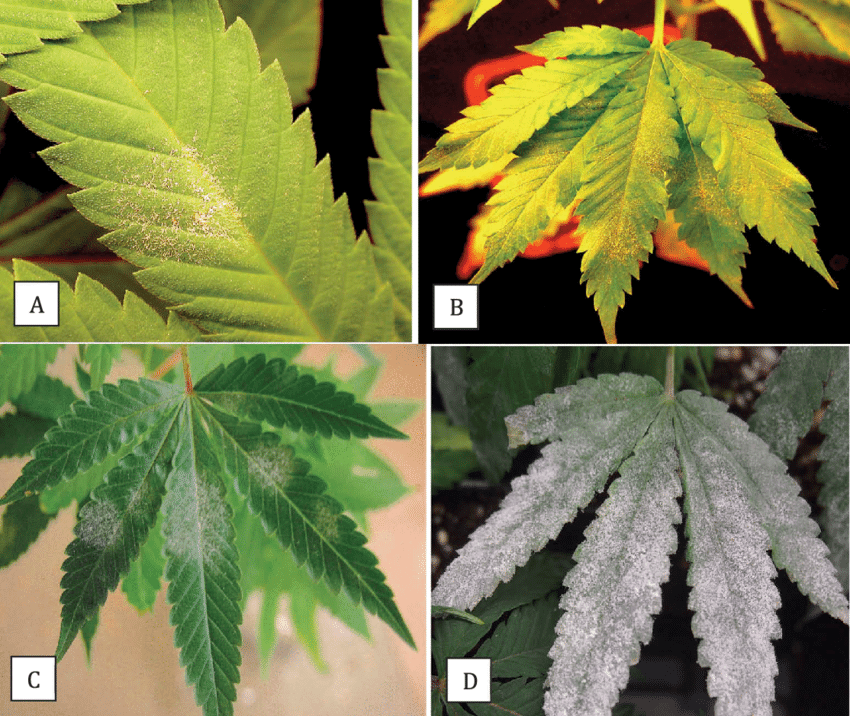
Deprivation of essential nutrients or light negatively affects the plant’s growth. Failure for the grower to correct the cannabis deficiencies in time leads to the crops ceasing to grow, poor development of buds, or dying. If they grow to the last stage, you may end up with poor quality yields.
One part of the cannabis plant that shows the first signs of deprivation or deficiency is the leaf. Others are the branches and stems. Cannabis plants are extremely resilient and can withstand different harsh environments or crop invaders for some time.
However, this is not a green light for any grower to allow the plants to grow without regular monitoring. The resilience of the crops is a positive thing because it provides you with enough time to learn and figure out any issues that look different and treat them before the plant goes into complete ruin. In this article, we list the most common cannabis leaf symptoms.
Common Cannabis Leaf Symptoms
-
Overwatering
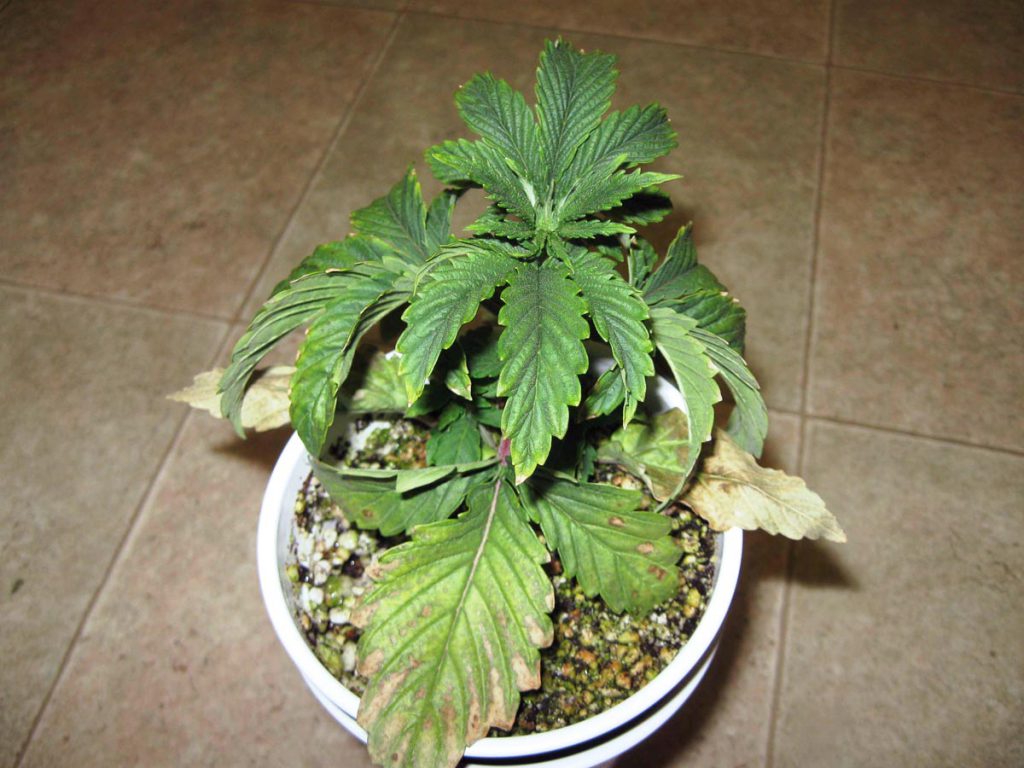
Overwatering is one of the most common cannabis problems. Even though the problem causes the plants to change and slow down growth, it is easy to rectify. Overwatering leaf symptoms include drooping, curling, yellowing, and root rot.
The leaves also become tight and rigid because of holding too much water. Lack of oxygen is also another issue when it comes to overwatered plants.
-
Underwatering
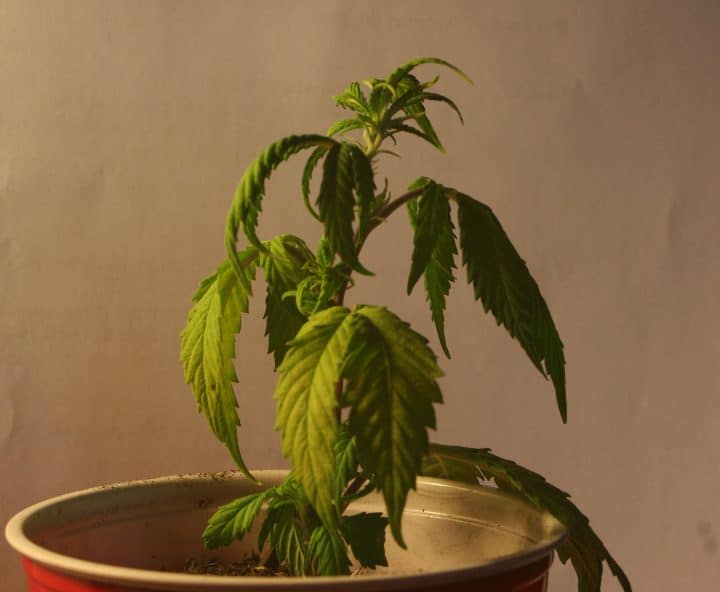
Underwatering is another common problem that several growers deal with when growing cannabis. Under-watered cannabis plants’ symptoms are drooping of the leaves, thin or papery look, wilting or lifeless looking leaves, yellowing, and nutrient deficiency. Extended underwatering of the plant also leads to curling and bunt tip leaves.
-
Nutrient Burn
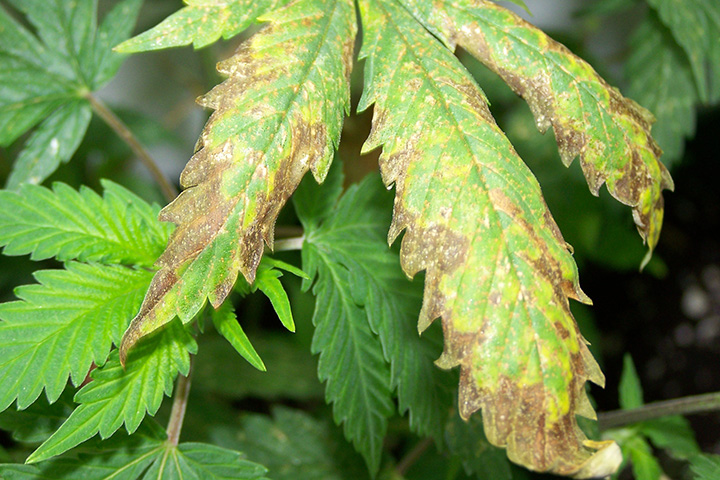
Feeding your plants with strong nutrient mixes, the wrong nutrients, or feeding them more times than you should, leads to nutrient burn. Some of the most common symptoms of a nutrient burn are brown leaf edges, crispy or burnt look, and yellow tips and edges.
Some of the most common causes of nutrient burns or nutrient toxicity include deficiencies of potassium, nitrogen, calcium, magnesium, and copper.
[amazon bestseller=”marijuana nutrients”]-
Potassium Deficiency
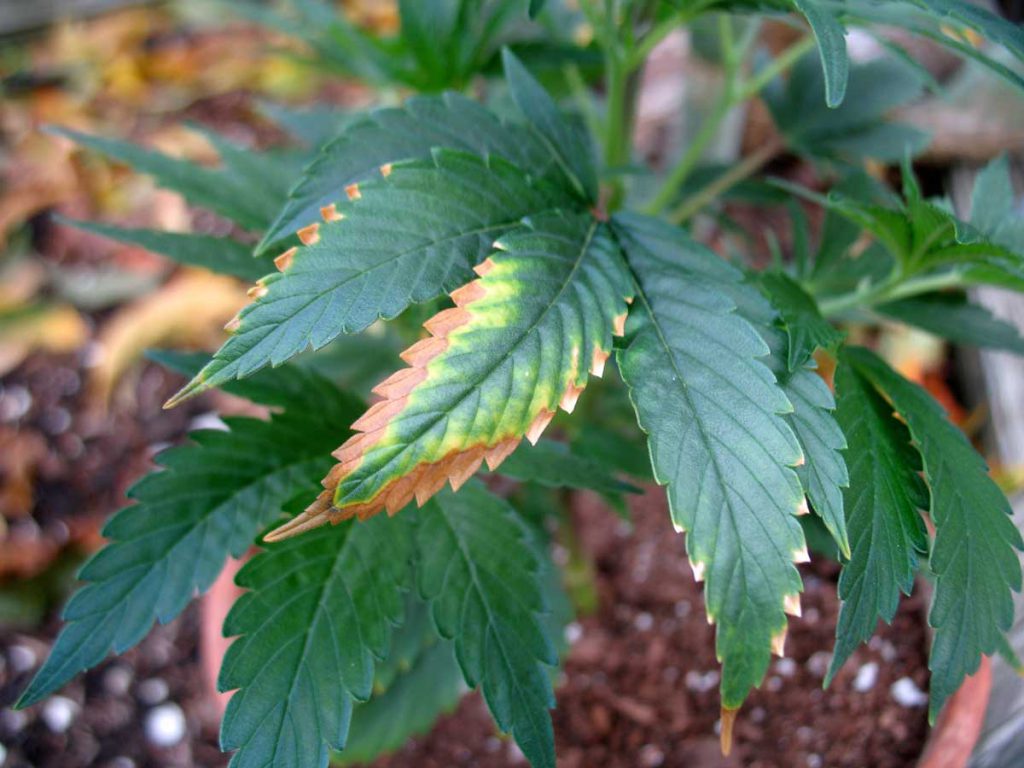
Plants with potassium deficiency exhibit yellow leaves that begin at the tips before advancing to the base. A burn on the edges of the leaves is also another potassium deficiency symptom. In extreme deficiency cases, the leaf exhibits dead tissue spots. Eventually, the leaf dies after a series of wrinkles.
-
Magnesium Deficiency
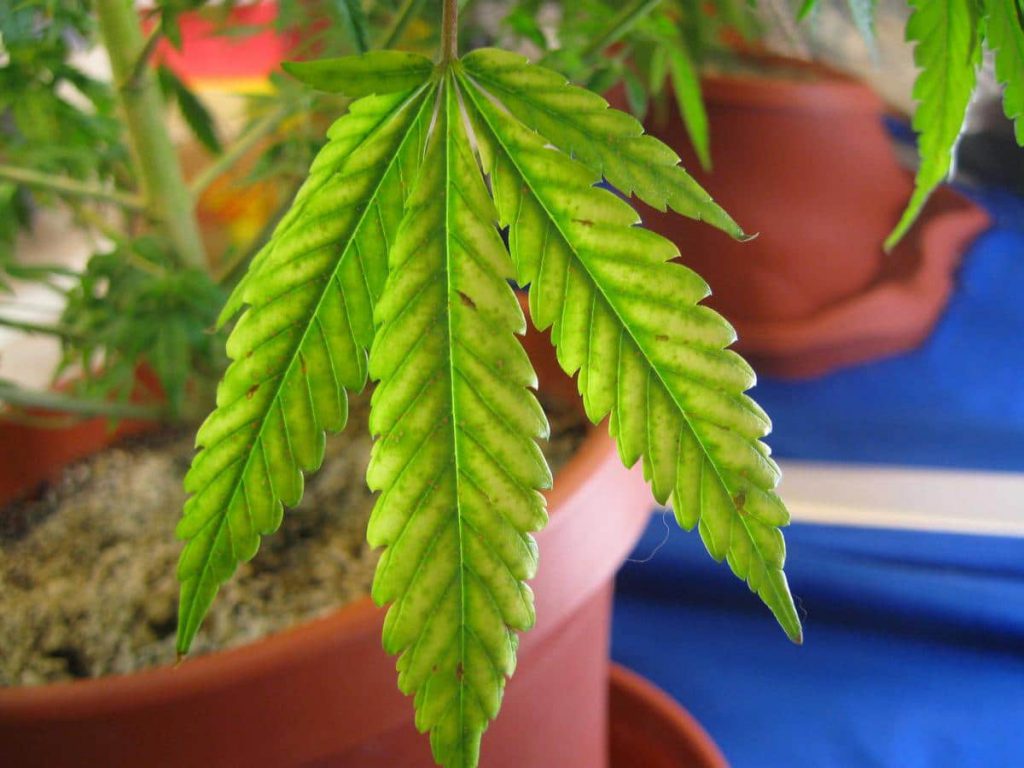
You can tell when a plant has magnesium deficiency if the leaf has yellow spots on the edges. Older leaves with magnesium deficiency exhibit yellow spots between the veins. Other symptoms include brown spots and leaves folding up before dying.
-
Copper Deficiency
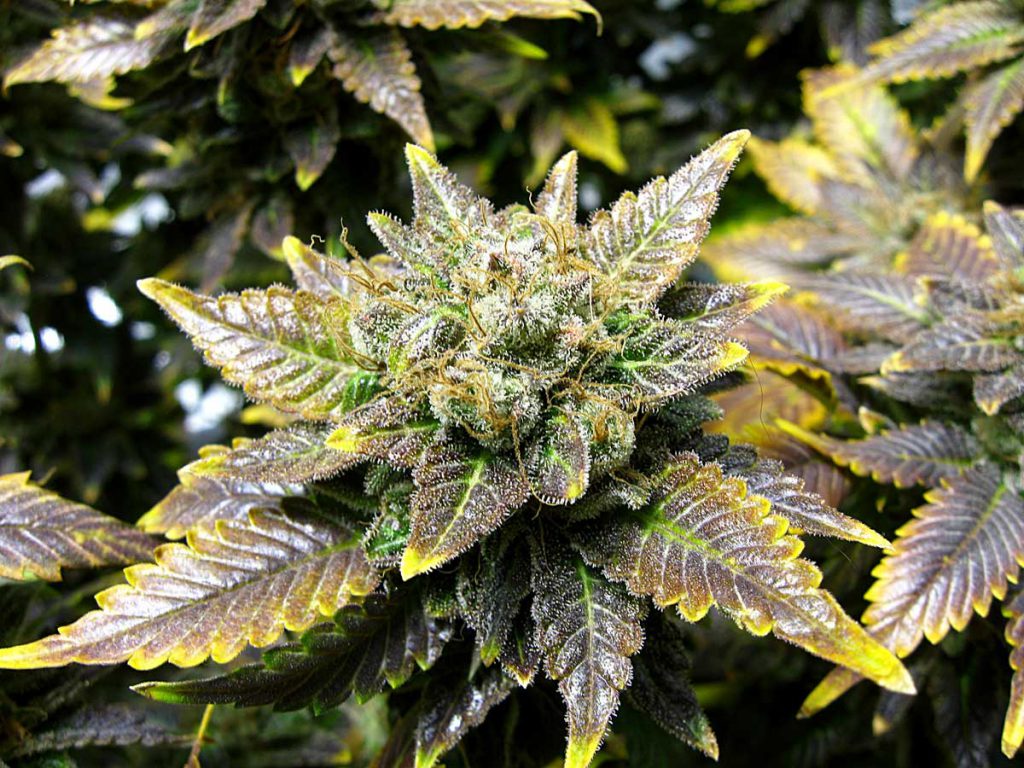
Symptoms of copper deficiency in cannabis plants are dark leaves with purple or blue undertones, yellow or white tips and edges, and metallic or shiny sheen on the leaves. The deficiency mostly affects leaves that are directly under the grow light. The other symptom worth noting is cannabis buds not ripening or growing fast enough.
-
Nitrogen Toxicity
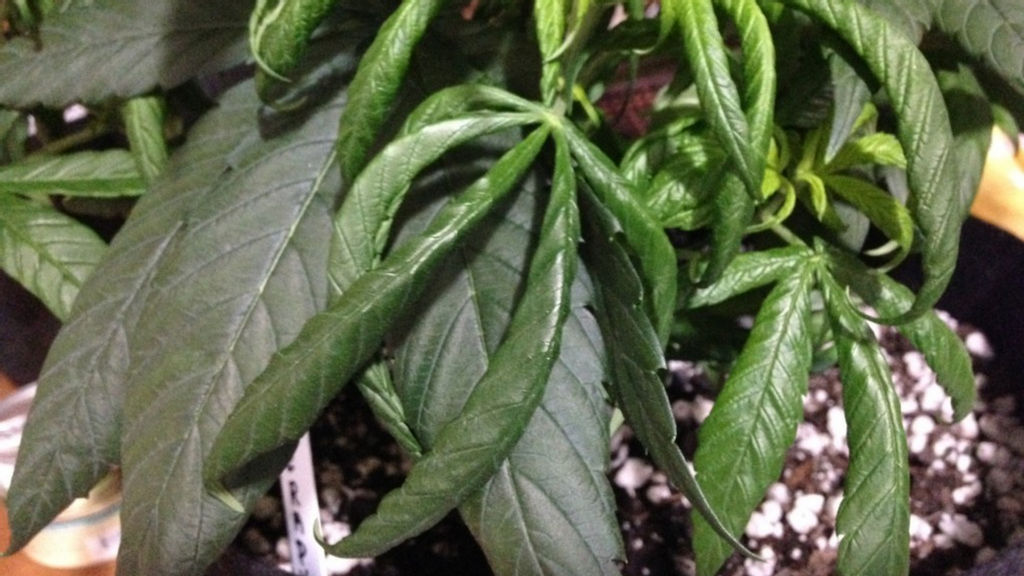
Nitrogen toxicity starts with the tip of the leaf losing its color. The loss leaves the leaf pale. Afterward, the leaf turns brown and wrinkles before finally falling off the cannabis plant.
-
Calcium Deficiency
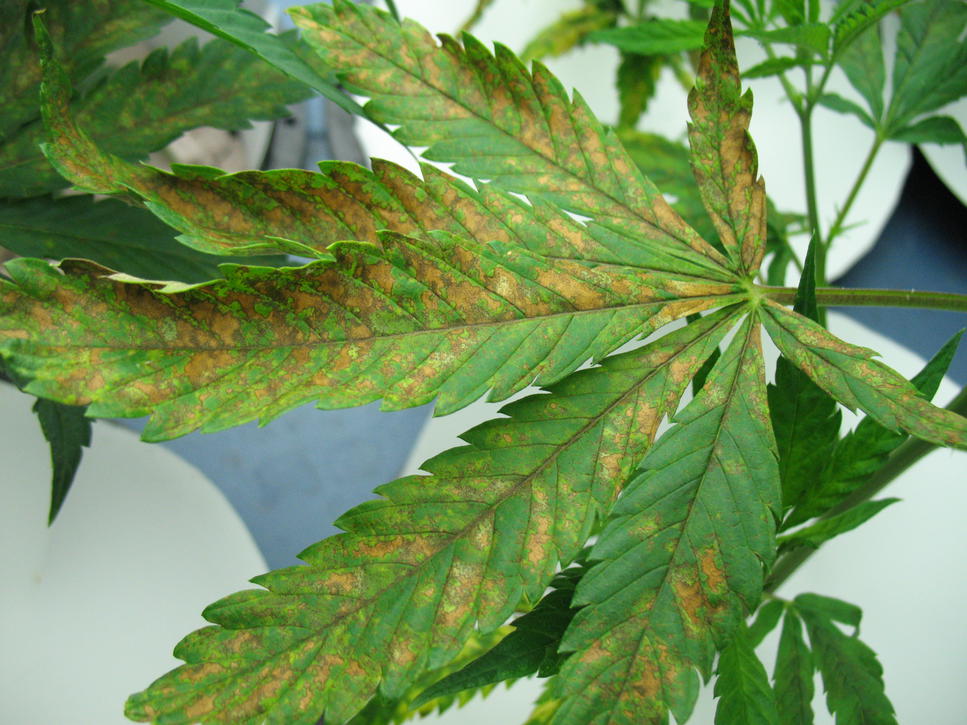
The main indication that your cannabis plant has calcium deficiency is the appearance of bronze or brown splotches on the leaf. The deficiency is not easy to diagnose because it appears alongside other deficiencies such as iron and magnesium. The symptoms mostly show on the upper leaves and leaves exposed to the light.
-
Iron Deficiency
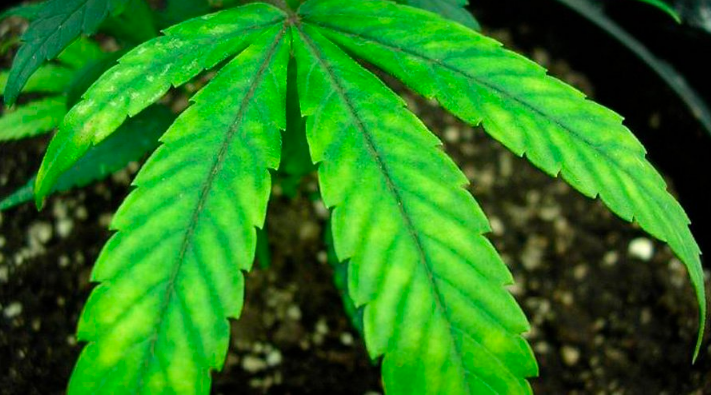
One of the trickiest symptoms to identify in cannabis plants is iron deficiency. It bears the same symptoms as magnesium and zinc deficiencies, which is the reason it is tricky. The unique symptoms include yellowing of the cannabis new leaf shoots. The yellowing proceeds to a white color before the leaves die due to chlorophyll deficiency.
-
Phosphorous Deficiency
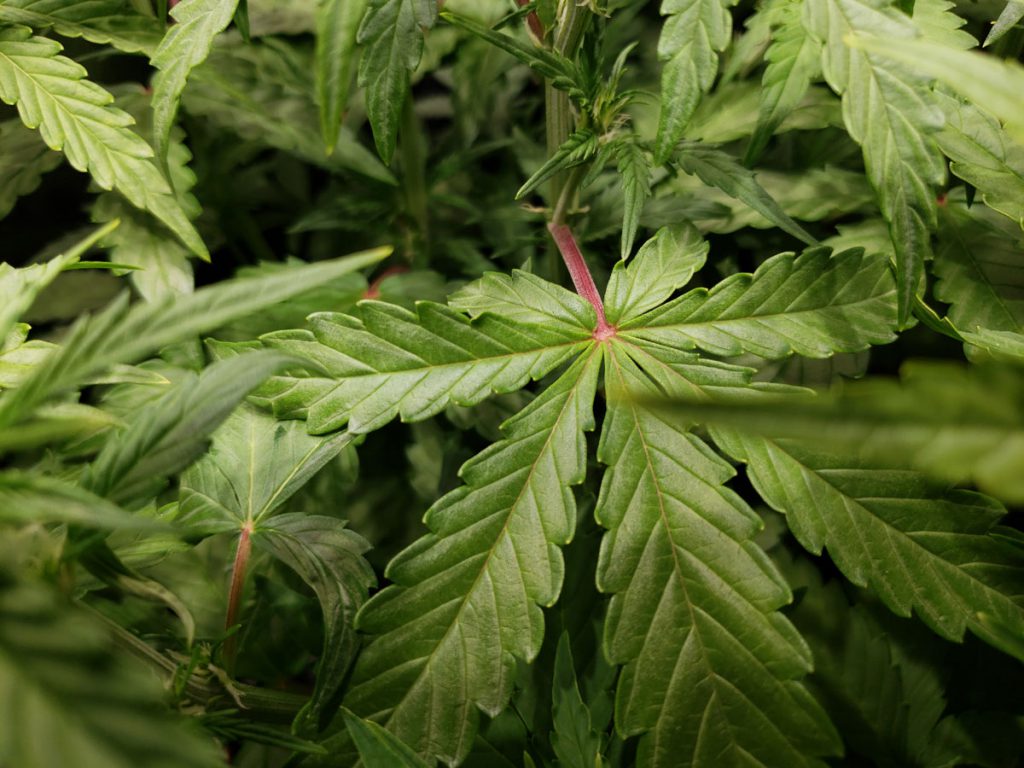
Phosphorous is one of the most important nutrients that cannabis plants need for proper and healthy development. In the case of a phosphorous deficiency, the symptoms appear first on the cannabis plant older leaves. The leaves of the cannabis plant turn yellow or dark green in the majority of the cases. Other symptoms include bluish and brownish spots on the leaves.
-
Sulphur Deficiency
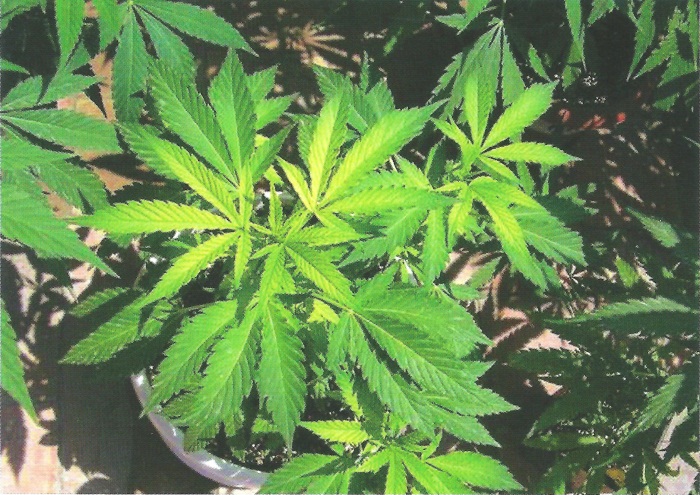
Sulfur is another crucial nutrient that plants need for proper growth. Sulfur deficiency exhibits the same symptoms as those of nitrogen deficiency. However, unlike nitrogen deficiency, sulfur deficiency first affects the newer leaves before moving to the older ones. The deficiency also attacks the leaf first before moving to the tip. The signs are brown and dry leaf edges that progress to whitish-yellow before the leaves start to drop off the plants.
-
Manganese Deficiency
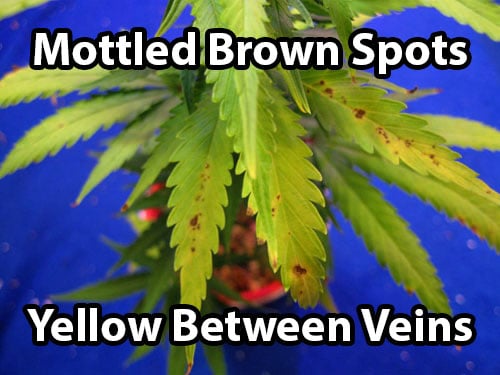
Manganese deficiency is rare among cannabis plants even though it shares the same characteristics as a sulfur deficiency. During the early stages of the deficiency, leaves turn yellow with much darker veins than normal. The yellowing of the leaves starts at the base before progressing to the tip. After further progress of the deficiency, necrotic, brown spots appear throughout the surface of the leaf. If not corrected, the spots spread, affecting the whole plant.
-
Heat Stress
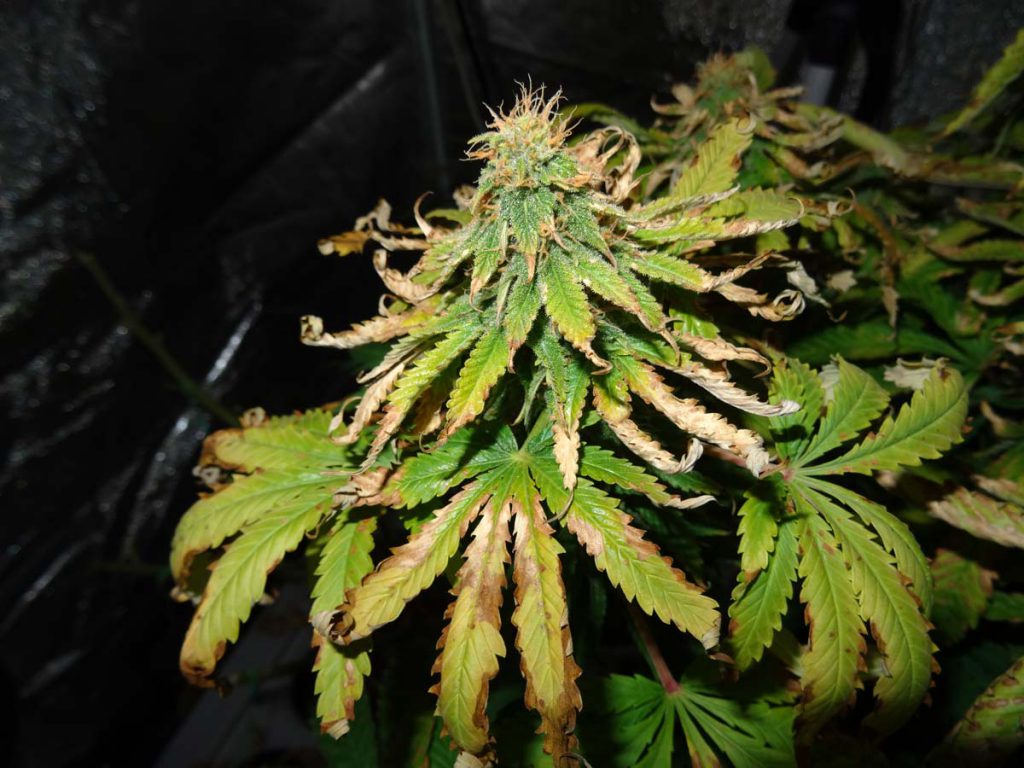
Heat stress happens when the distance between the led grow lights and the crops are not good enough. It also occurs if the grow tent temperatures are much higher than required. Though marijuana plants are resilient and can handle a few days of high temperatures, too much of it eventually affects their development. Heat stress symptoms are yellow and burnt leaf edges.
[amazon bestseller=”led grow lights “]-
Wrong pH Range
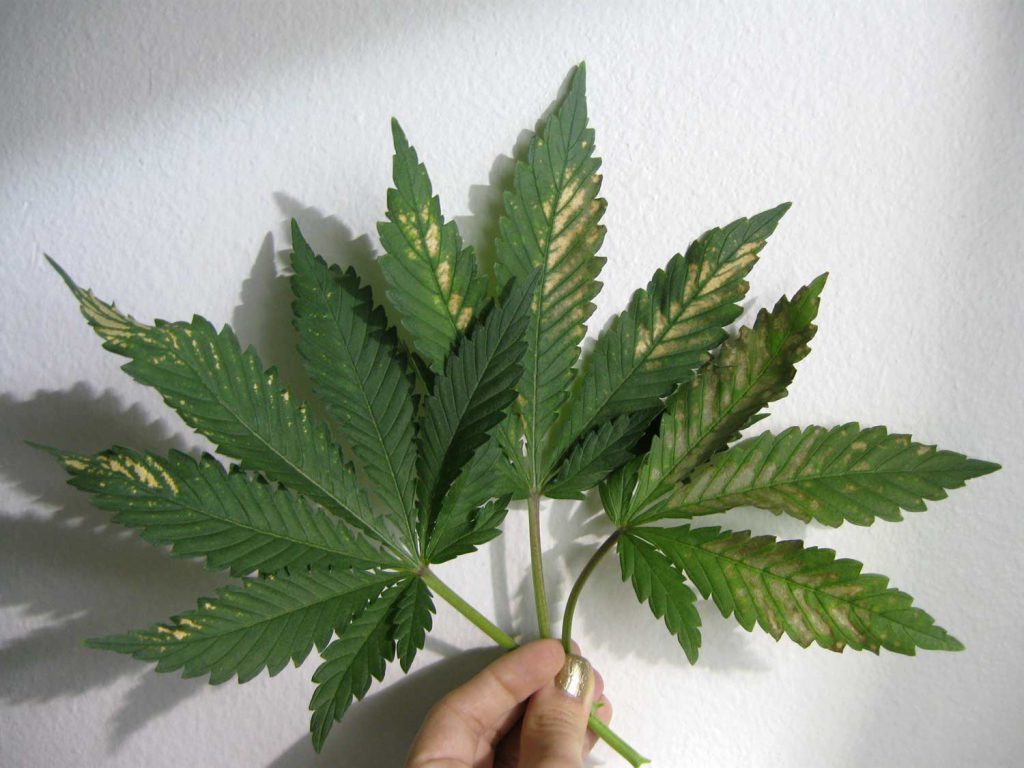
Growing cannabis at the wrong pH range is another issue that many growers experience with their crops. When you mix water and nutrients at the wrong pH, the issue occurs, causing poor absorption of bathwater and the nutrients. Wrong pH symptoms include leaves turning yellow with burn on the edges.
-
Bud Rot
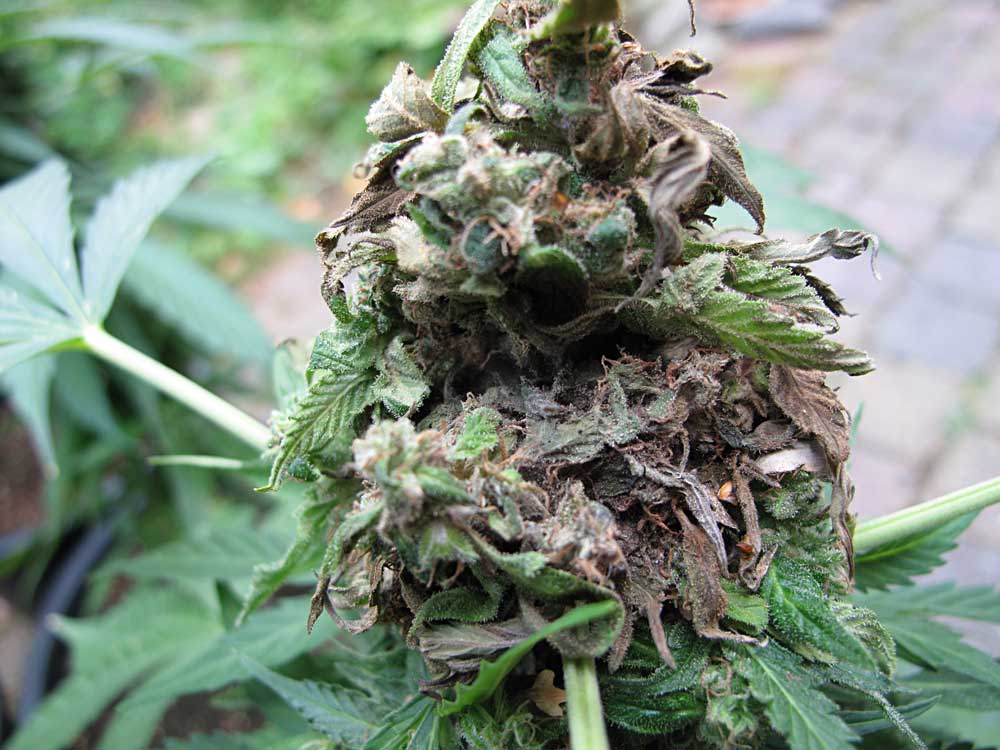
Bud rot appears because of an attack by fungi by the name Botrytis Cinerea. The fungi attack the buds from the inside, leading to rot with a moldy brown or gray inside. The symptoms of bud rot are discolored leaves that turn yellow and web-like mold on the buds. The buds also turn dark after the attack.
-
Spider Mites
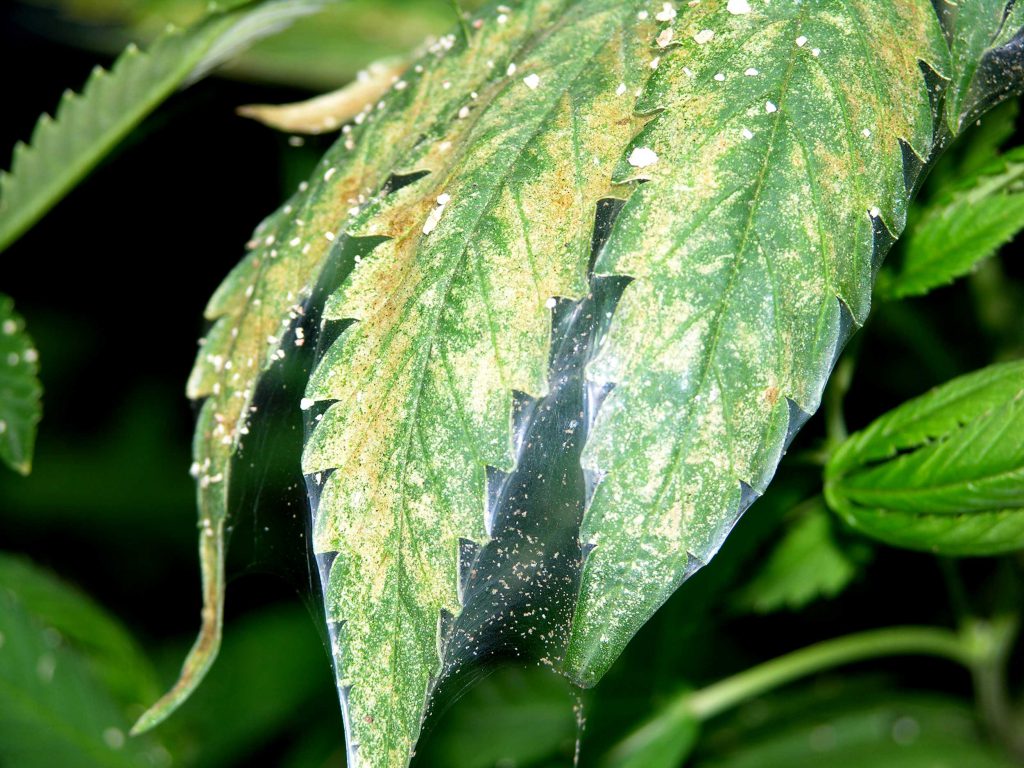
Cannabis pests such as spider mites are a common menace. The pests are similar to ticks, spiders, and other different bugs that belong in the same family. Once they attack the plants, spider mites are hard to get rid of.
The signs that your plants have spider mites are striplings or tiny spots on the leaves. The leaves also change their color, curl, and eventually fall off the cannabis plant. The other signs are webs along the stems and under the leaves with spider mites moving around.
[amazon bestseller=”cannabis spider mites”]-
Thrips
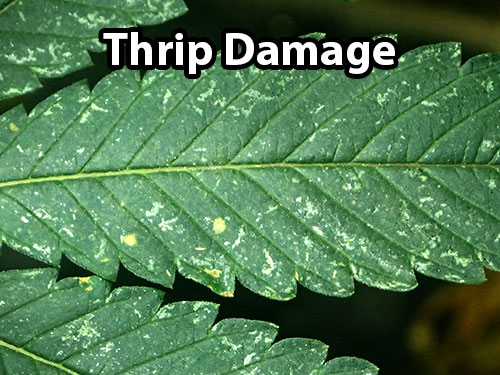
Thrips come in different forms ranging from golden or dark-winged insects to wormy nymphs. They attack the cannabis plants by piercing the leaves and sucking out whatever they can. The insects leave behind slimy, shiny, bronze, or silver spots on the places they bite. As the leaves continue growing, the pots become bigger and eventually die if the attacks go on long.
Understanding Cannabis Leaves
You can tell a lot about the structure and genetics of the cannabis plants by just cooking at the leaves. Some countries, especially in the USA, have less pure Sativa and Indica strains but more hybrids, which are mostly a cross between the two main strains.
However, the hybrid leaves’ appearance can still give you a clue as to which genetic structure the strain leans more towards Indica and Sativa. Besides the leaves playing a huge role in identifying the genetics of the cannabis strains, they also help support the growth and overall health of the marijuana plant.
The leaves also have tiny holes that release oxygen and water while taking in carbon dioxide. They play the largest role in photosynthesis and nutrient absorption.
Wrapping It Up
Looking at the shape, structure, and color of the cannabis plant leaf tells you a lot about the plant’s health. The signs on the leaves showing that the plant has one deficiency or another are a guide as to what the grower is doing wrong with growing the plants.
It is crucial to learn to examine the leaves closely and carefully each time the grower tends to the plants. Identifying the abnormalities early makes it easier to address them early before they go out of hand to stunt growth or tamper with development and the yields.
[amazon bestseller=”complete cannabis grow tent kit”]



